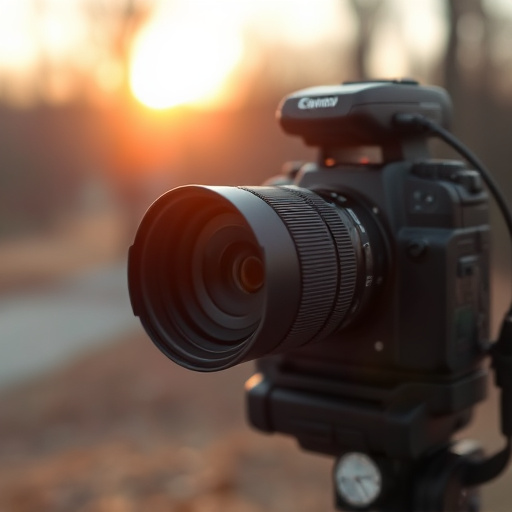Covert recording equipment offers a powerful yet discreet surveillance solution for various purposes, with wireless systems providing flexibility and motion-activated recorders conserving energy. Selecting the best indoor spy camera system requires understanding specific needs like coverage area, resolution, motion detection, and privacy features. Strategic placement in high-traffic areas ensures maximum effectiveness, while advanced technology helps deter intruders and protect privacy. Balancing security and privacy, these systems must adhere to legal frameworks and ethical guidelines regarding consent and personal space.
“Uncover the art of covert recording equipment placement with our comprehensive guide. From understanding diverse surveillance tools to selecting the Best Indoor Spy Camera System, this article offers an extensive overview. Learn the subtleties of strategic camera placement for maximum effectiveness and explore advanced detection techniques to stay ahead. We also dissect legal and ethical considerations, ensuring responsible usage. Discover expert insights on navigating this intricate world.”
- Understanding Covert Recording Equipment: A Comprehensive Overview
- Choosing the Best Indoor Spy Camera System for Your Needs
- Strategically Placing Covert Cameras for Maximum Effectiveness
- Advanced Detection Techniques to Avoid Unwitting Surveillance
- Legal and Ethical Considerations in Using Covert Recording Devices
Understanding Covert Recording Equipment: A Comprehensive Overview
Covert recording equipment, often referred to as spy cameras or hidden surveillance devices, is a sophisticated and discrete way to capture video footage without raising suspicion. These systems are designed to blend into their surroundings, making them ideal for various applications, from home security to professional investigations. Understanding the capabilities and placements of these devices is crucial when considering the implementation of a best indoor spy camera system.
The most common types include wireless cameras, motion-activated recorders, and audio bugs. Wireless systems offer flexibility in terms of placement, allowing users to set them up virtually anywhere with a clear view or line of sight. Motion-activated recorders are energy-efficient and perfect for areas where only specific events trigger the camera’s activation. Audio bugs, on the other hand, are ideal for capturing conversations without revealing the presence of a recording device. Placement strategies vary based on the goal: whether it’s monitoring a room, tracking activity in a narrow space, or ensuring discrete surveillance in high-traffic indoor areas.
Choosing the Best Indoor Spy Camera System for Your Needs
When selecting a Best Indoor Spy Camera System, understanding your specific requirements is paramount. Consider factors like desired coverage area, resolution for clear footage, motion detection capabilities to avoid false alerts, and ease of setup and use. A top-tier system should offer remote access via smartphone or tablet, allowing you to monitor activities in real-time or review recorded clips from anywhere with an internet connection.
Look for a camera system that integrates seamlessly with existing smart home devices for automation and control. Wireless connectivity options like Wi-Fi or Bluetooth ensure easy installation without the mess of cables. Additionally, consider storage solutions; some systems offer cloud storage for remote backup while others include local storage for on-site retention of footage. Choose a system that aligns with your privacy needs and features motion-activated recording to conserve storage space and battery life.
Strategically Placing Covert Cameras for Maximum Effectiveness
Strategically placing covert cameras is key to maximizing their effectiveness, especially in indoor spaces. When selecting a best indoor spy camera system, consider high-traffic areas, such as entry points, corridors, and common gathering spots. Mounting these devices discreetly yet optimally ensures comprehensive coverage without drawing attention. For instance, positioning cameras near windows or on ceilings can capture wide angles, while wall-mounted units in hallways offer clear line-of-sight.
A well-planned layout involves understanding the space’s dynamics: where people congregate most often and what areas require closer monitoring. This strategic approach enhances the camera’s ability to deter potential intruders and gather valuable evidence, making it an indispensable tool for enhancing indoor security.
Advanced Detection Techniques to Avoid Unwitting Surveillance
In today’s digital era, covert recording equipment has become increasingly advanced and harder to detect. To avoid unwitting surveillance, it’s crucial to invest in a robust Best Indoor Spy Camera System that employs cutting-edge detection techniques. These systems often incorporate motion sensors, heat signatures, and AI algorithms to alert users of any unusual activity or hidden devices.
By utilizing these advanced methods, the best indoor spy camera systems can actively detect and identify covert recording equipment placement. This gives users a significant advantage in safeguarding their privacy and security. Regularly updating firmware and employing encryption techniques further enhance the system’s effectiveness against ever-evolving surveillance technology.
Legal and Ethical Considerations in Using Covert Recording Devices
The use of covert recording equipment, especially in indoor spaces, raises a complex web of legal and ethical concerns. While a top-tier Best Indoor Spy Camera System can offer significant benefits for security and surveillance, it’s crucial to understand and adhere to privacy laws and ethical guidelines. In many jurisdictions, the placement and operation of hidden cameras are strictly regulated to protect individuals’ right to privacy. Unauthorized installation or use of such devices can lead to severe legal repercussions.
Ethically, the decision to employ covert recording should balance security needs with the potential invasion of privacy. It’s essential to obtain explicit consent when feasible and to place cameras in areas that offer minimal intrusion into personal spaces. For instance, a Best Indoor Spy Camera System should be deployed strategically, focusing on common areas accessible to all residents or employees while avoiding private rooms or sensitive spaces like bathrooms or bedrooms without proper authorization.
In conclusion, understanding covert recording equipment, its strategic placement, and advanced detection techniques are essential for both personal privacy protection and legal surveillance practices. While the best indoor spy camera system can greatly enhance security measures, it’s crucial to navigate this technology responsibly, respecting legal boundaries and ethical considerations. By staying informed about these aspects, individuals and organizations alike can leverage covert recording devices effectively while upholding moral standards.
